2022 marks the 20th anniversary of Infineon Technologies introduction of PSoC™ programmable system-on-chip. Smart terminal, smart city, clean energy, smart industry... Every smart connected domain is supported by Infineon's PSoC microcontroller series. According to statistics, there are more than 4 billion PsoCs in the market, and this is just the beginning...
On November 6, 2022, Infineon held the PSoC™ 20 Years of Peer Activity celebration.。
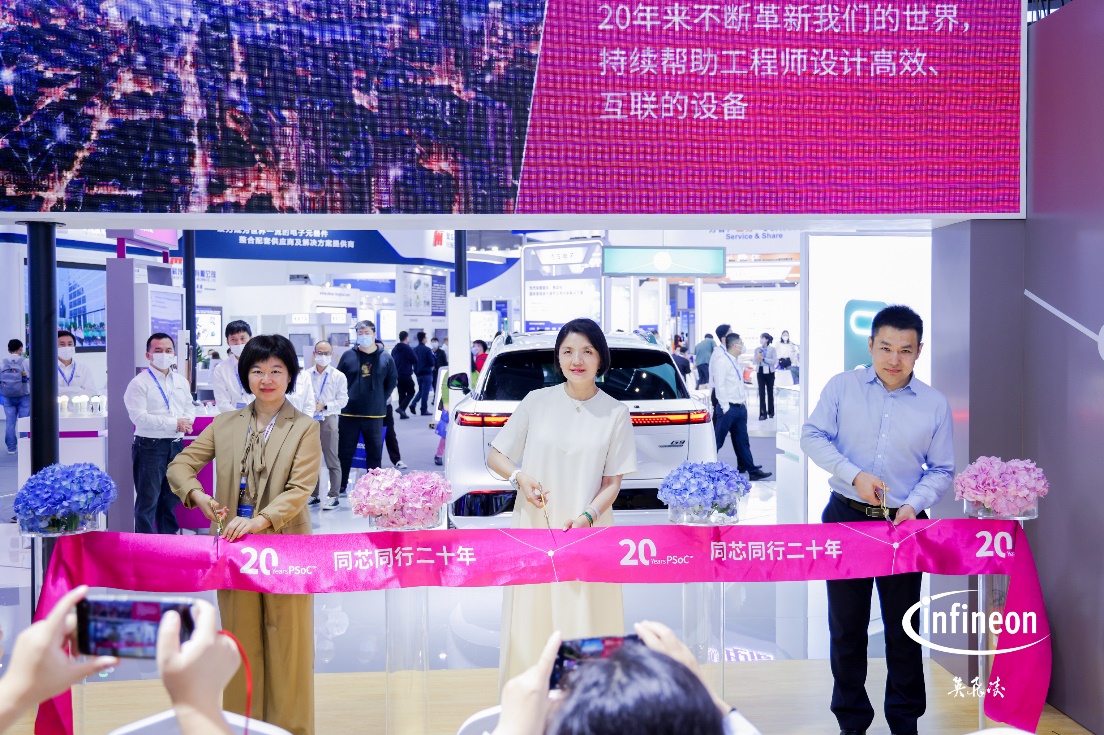
Ribbon-cutting guest (from left to right) : Zhao Xin, Deputy general manager of Creativity Informa Markets; Jiayu Cheng, Vice President, Security Interconnection Systems Business Unit, Greater China; Li Xian, Executive Vice President of Shenzhen Kaadas Intelligent Technology Co.,
LTD.; Peng Zunian, marketing director of Infineon Technologies Greater China Security Interconnection Systems Business Unit, said at the event that iot devices have five hardware elements, which are perception, computing, execution, connectivity and security. "PSoC products will continue to evolve towards these five elements, providing flexible and practical products to help engineers create and develop more secure and intelligent iot applications."
The PSoC family has grown
The PSoC family of microcontrollers is an important component of Infineon's 32-bit MCU portfolio. Based on the Arm® Cortex®-M kernel and high-performance programmable analog and digital units, the PSoC is a highly programmable embedded system on a chip.
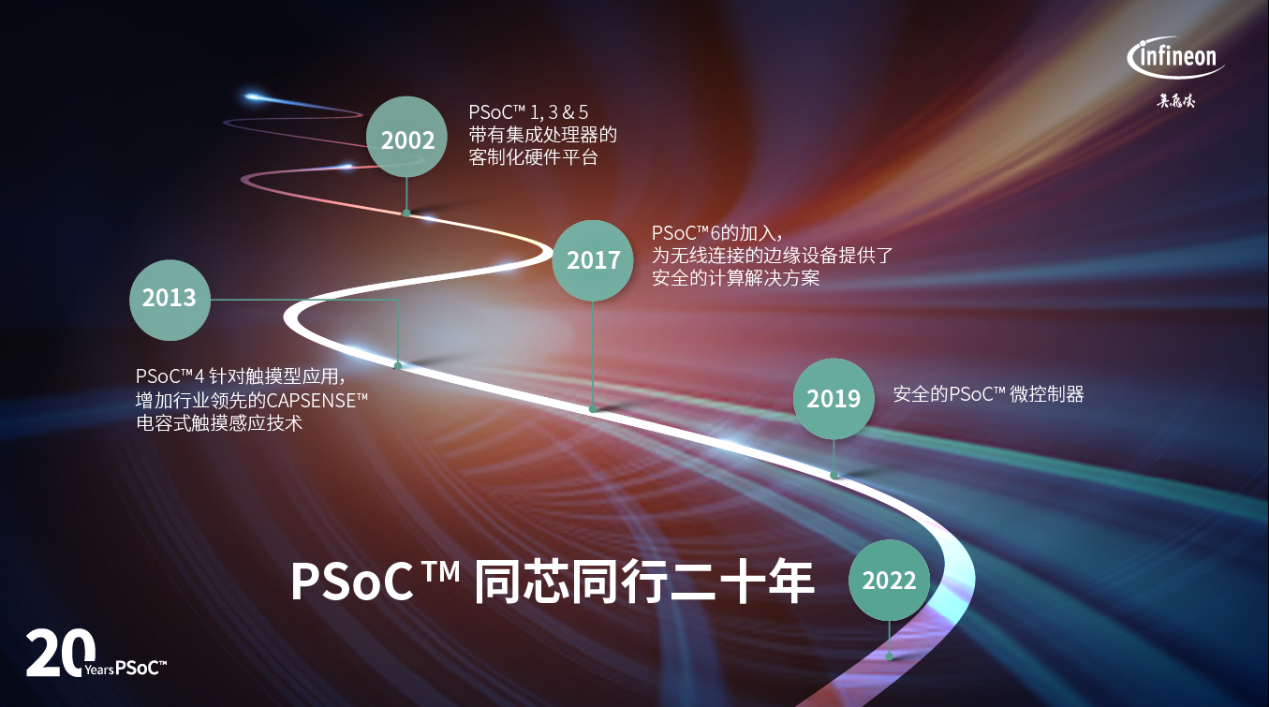
Twenty years ago, when Cypress's first programmable system-on-chip (PSoC) entered the crowded 8-bit microcontroller (MCU) market, it marked a bold move by the company to establish itself in a fast-growing market.
Ten years after the introduction of the entry-level PSoC 1 and having shipped more than 1 billion units, Cypress (part of Infineon since April 2020) has introduced the PSoC 3 and PSoC 5 series. The PSoC 3 has an 8-bit 8051 MCU kernel, while the PSoC 5 has a 32-bit Arm Cortex M3 kernel. Both series extend the flexibility, integration, and programmability of the PSoC. Features have also been developed for specialized applications, such as CAPSENSETM capacitive touch sensing solutions.
The fourth generation PSoC was launched in 2013. PSoC 4 introduces a 32-bit Arm Cortex-M0 kernel.
The PSoC 6, launched in 2017, has opened the sixth-generation PSoC's leading market position. The ultra-low-power PSoC 6 with Arm Cortex-M4 and Cortex-M0+ dual cores and dynamic voltage and frequency regulation (DVFS) capabilities is designed for the Internet of Things.
Today, the PSoC family includes the PSoC 4 and PSoC 6 two mainstream series. They are suitable for a wide range of consumer applications, including smart homes, wearables and personal medical devices.

PSoC 6 series is designed for speeding up development of the Internet of things application and build ultra-low power MCU, Arm architecture (M4 and architecture (M0 + duo. Ideal for battery-powered applications, the dual-core architecture allows embedded system developers to optimize the power consumption and performance of their designs.
The PSoC 4 series is ideal for complex embedded systems due to its flexible and scalable low-power mixed-signal architecture, based on Arm Cortex-M0/Cortex-M0+. The PSoC 4 features a programmable analog front end and a range of connectivity options such as USB, CAN and BLE.

In addition to hardware, Infineon Technologies also provides many development resources at the software level. Such as ModusToolbox™, which supports a full range of Infineon microcontrollers and connected ics, is suitable for any form of embedded system development, from edgewise connected iot sensors to automotive HMI, and more.
Building a world where everything is connected
As mentioned above, Infineon Technologies PSoC microcontroller family is used in multiple smart connected applications.
Seeing is believing. At ELEXCON Shenzhen 2022, Infineon Technologies set up three major exhibition areas, namely "Future Mobility", "Internet of Everything" and "Energy Efficiency", to showcase how innovative semiconductor technologies can connect the real and digital worlds.
(1) The Internet of Everything
1、PSoC ™ 4 MAX Pioneer R&D Board and PSoC ™ 6 WiFi-BT pioneer R&D board
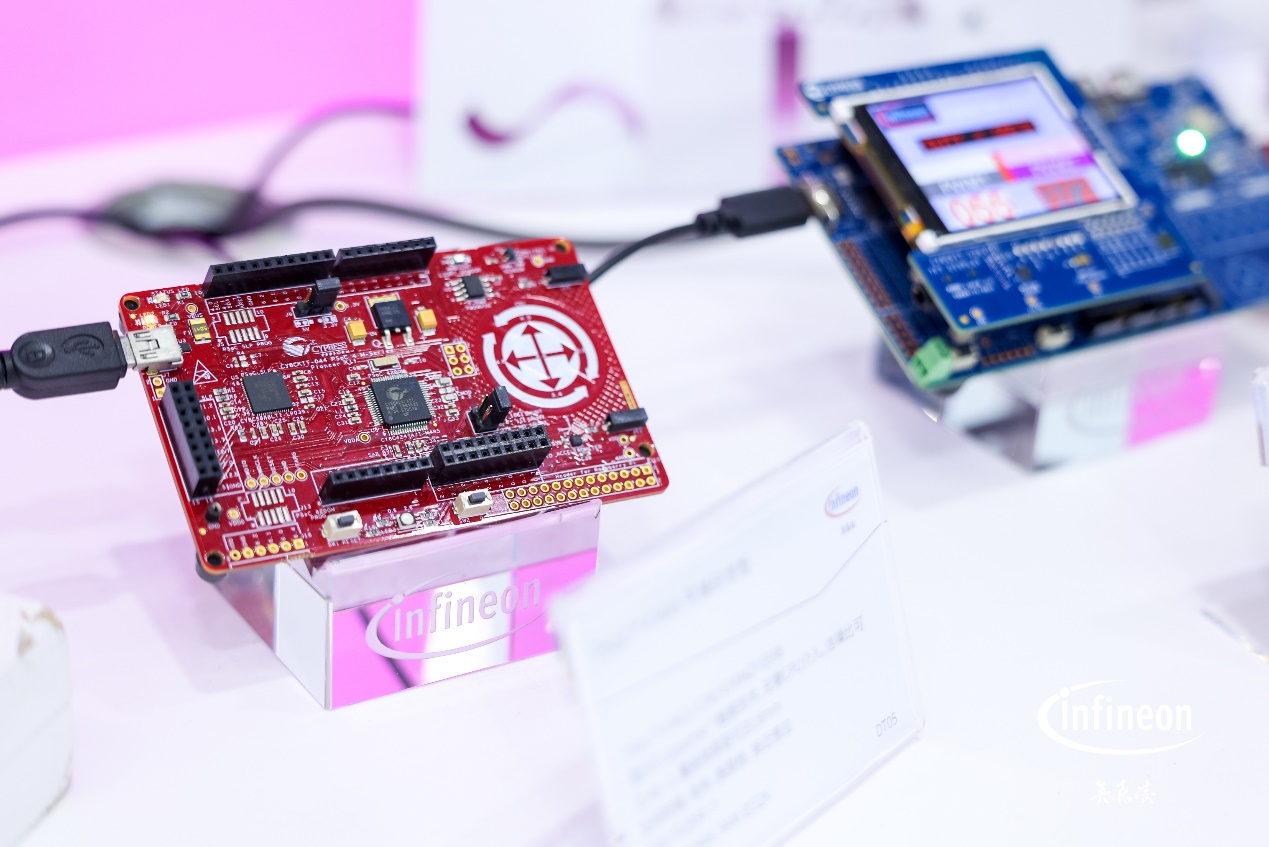
PSoC 4 is closer to the synthesis of some small applications with relatively simple functions, such as human-computer interaction, small motor control and other schemes. It requires relatively small computing power, so it can be used in some highly integrated application scenarios.

As for some new IoT applications, especially the increasing demand for computing power, many recognition functions (such as fingerprint recognition, voice decoding, etc.) can be applied to PSoC 6 architecture. Among them, Infineon showed the smart door lock solution is the application of PSoC 6. It basically integrates touch keys, fingerprint algorithm, and switch lock functions into one chip, greatly simplifying the design and saving BOM cost.

2. XPRINT Photo printer
Portable thermosublimation photo printer integrated with Wi-Fi and Bluetooth functions can support dual-band 2.4G and 5G, avoid crowded 2.4G, and realize one-button connection of mobile phone, anytime, anywhere, instant shot.
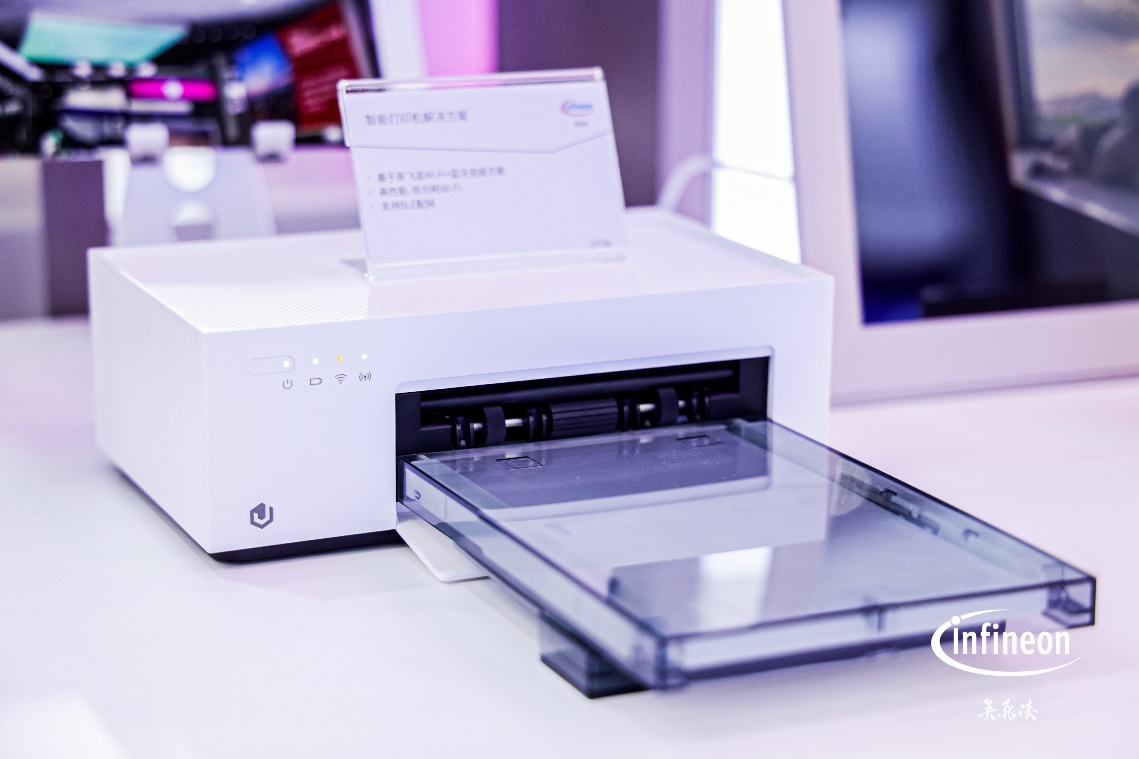
3. Passenger monitoring system based on 3D ToF
The ToF sensor used in automobiles is the first to meet the ISO26262 standard of high resolution sensor. It mainly has four application scenarios in cars, such as face recognition authentication, DMS, driver monitoring system, OMS, passenger monitoring system, , and finally blind spot detection outside the car
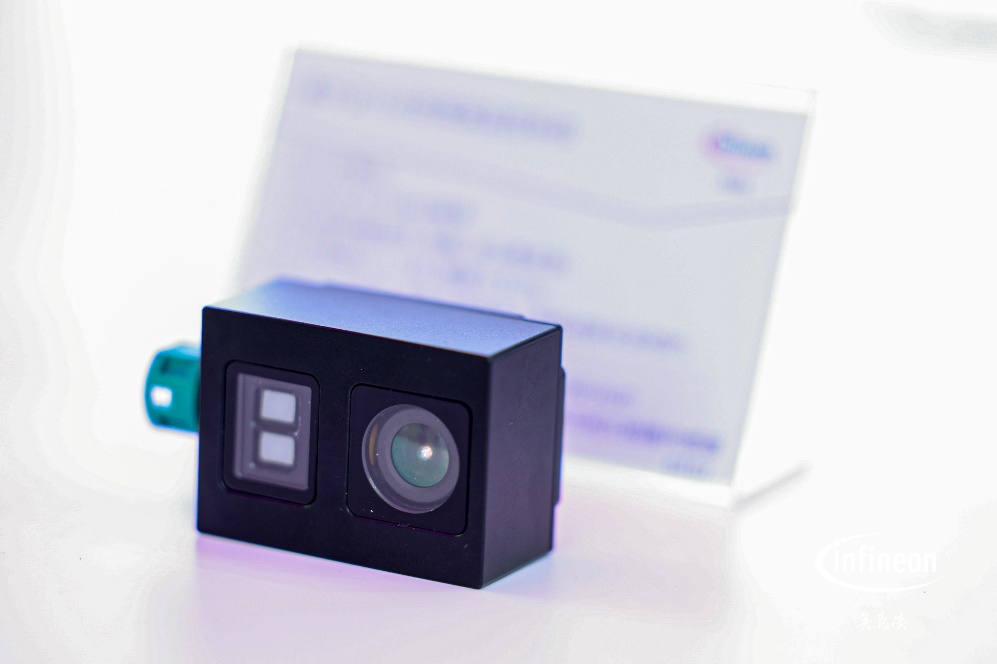
In addition to traditional industrial robots, 3D ToF can also be applied to domestic sweeper robots. The Infineon IRS2875 module implements two important functions, one is scanning modeling, the other is obstacle avoidance.
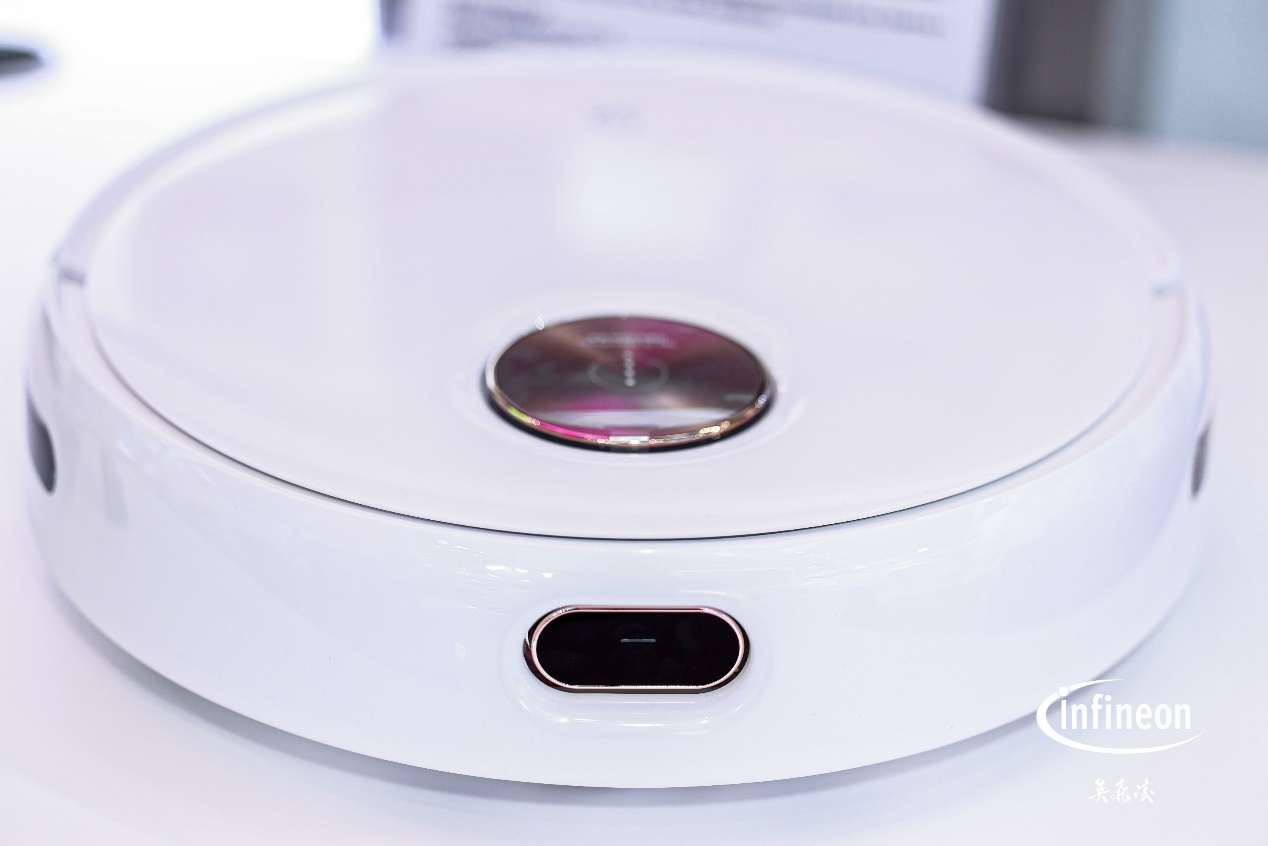
4. Millimeter wave radar chip

Infineon Sleep Breathing Demo demonstrates sleep breathing monitoring using millimeter-wave radar, where the chest cavity is aligned directly in front of the radar, which is equivalent to non-contact detection.
In addition, the radar sensor can be used in down lights to monitor pedestrian flow in real time.
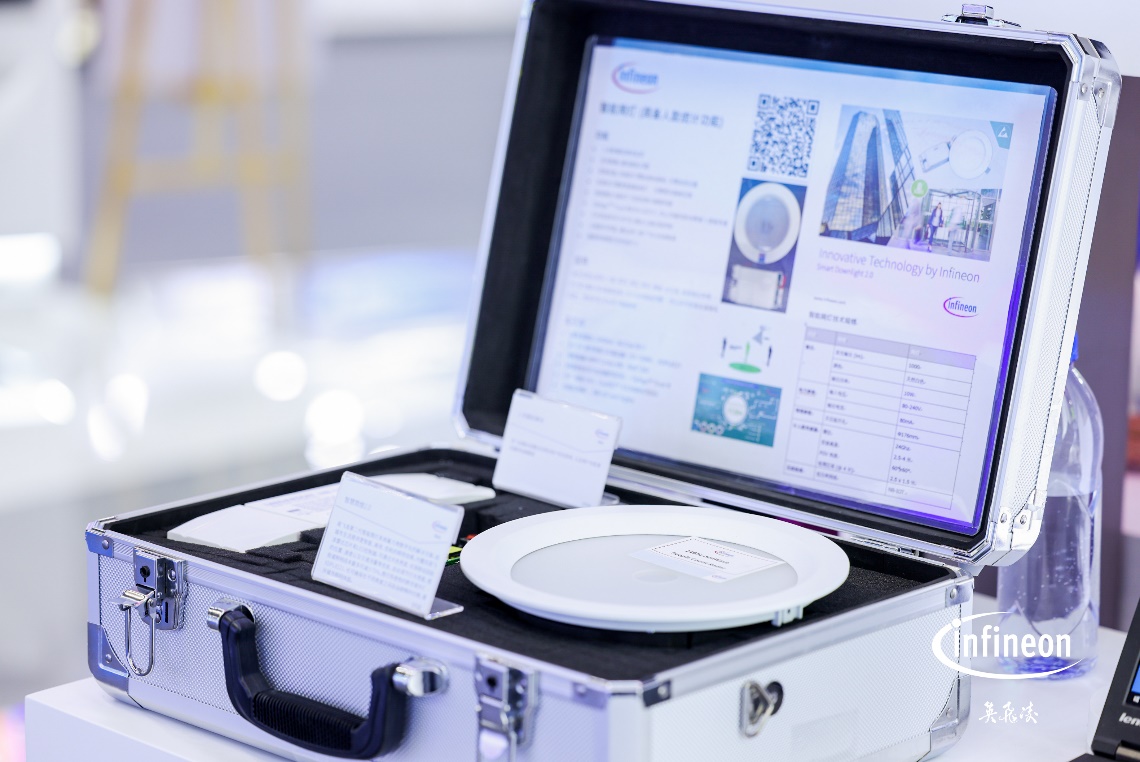
(2) Future travel
1. Sample of discrete device welding scheme
Car gauge level weldable version TO247 discrete IGBT, EDT2 750V electric drive chip technology, compatible with 30-180kW system design, optimized Rthj-c as low as about 0.35C/W.
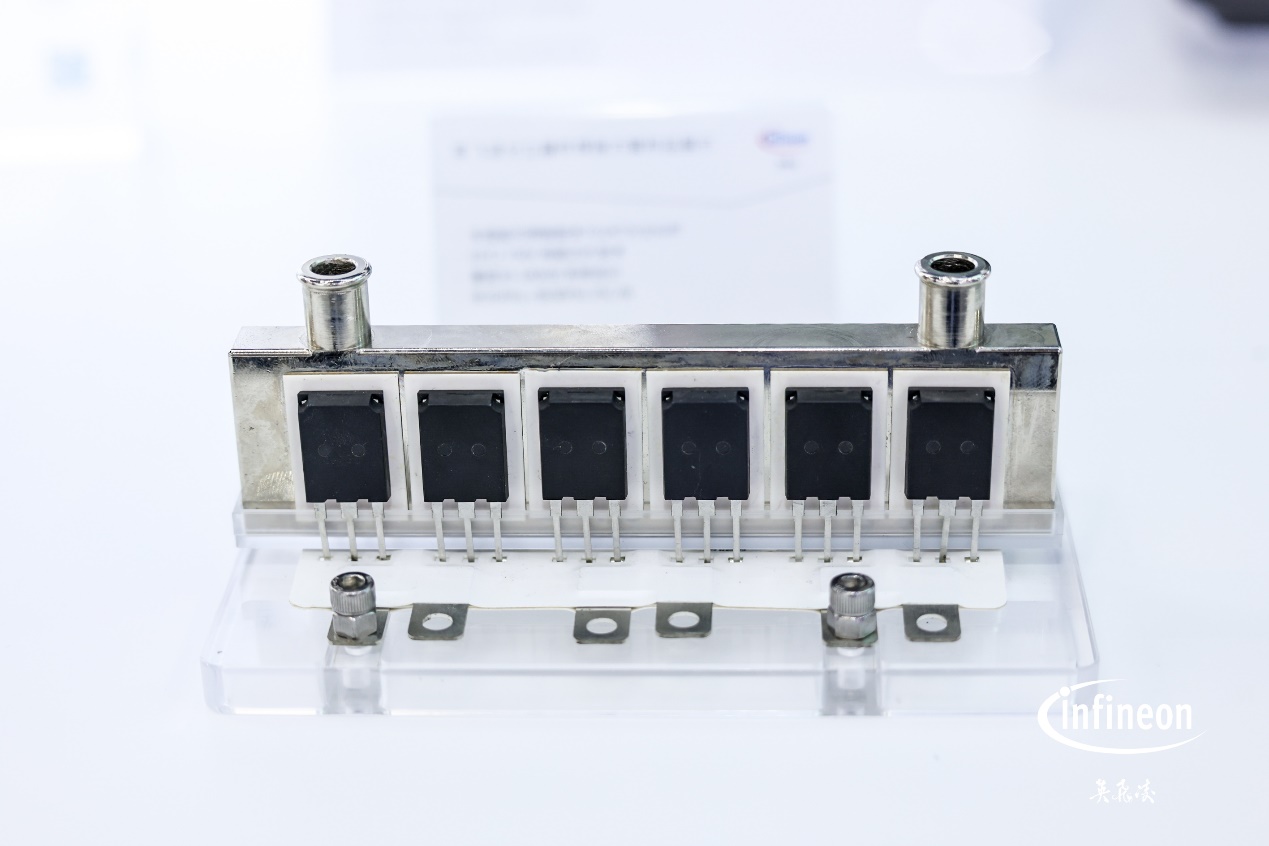
2. Battery management system
A overall solution that supports ASIL-D functional security, TLE9012DQU 12-channel independent ADC sampling, built-in low-pass filter to reduce the number of peripheral devices, and two-way Daisy chain communication to ensure consistent cell attenuation.
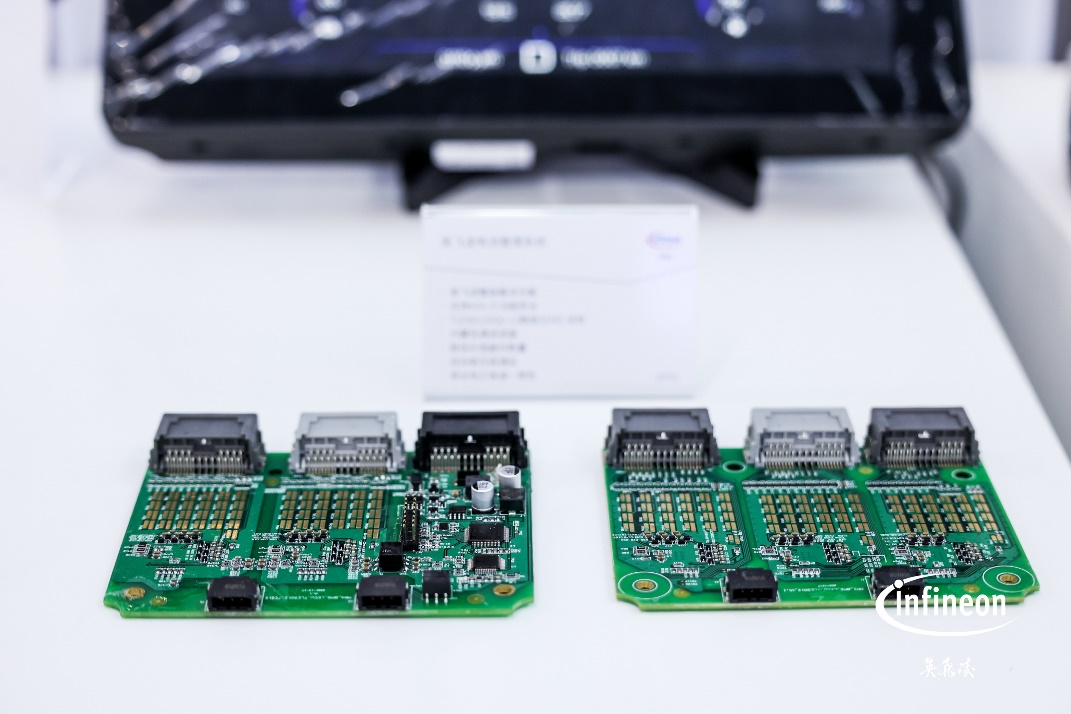
. Bluetooth car key
In the case of Bluetooth opening/closing, the user uses the mobile terminal installed with APP and clicks unlock/lock within a certain distance from the car, then the door will automatically open/lock. The whole key unlocking and locking process is transmitted and authenticated by the server, so the security can be ensured.

4. Car audio and visual system
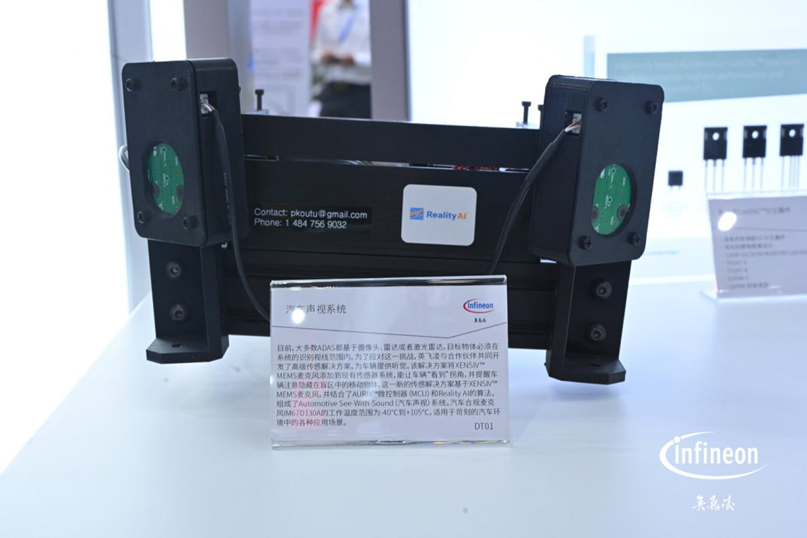
5. Hydrogen sensor
Hydrogen sensors are widely used in industrial and automotive fields, especially fuel cell vehicles and electric vehicle BMS system. In order to avoid casualties caused by hydrogen leakage or battery thermal runaway, more timely and accurate alarm in advance is particularly important. Hydrogen sensors are installed to monitor hydrogen concentration in real time, supplemented by pressure and temperature sensors. You can improve the security and redundancy of the entire system.
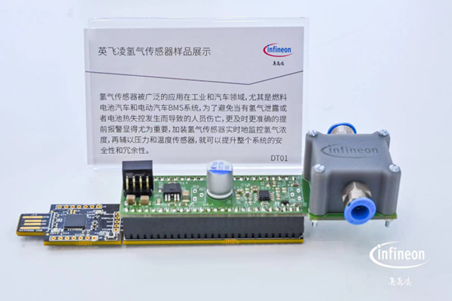
(3) Energy efficiency
1, 1200W with PFC three-phase motor driven evaluation board
It can realize efficient permanent magnet synchronous motor drives for pumps, fans, washing machines, general purpose drives and power tools up to 1.2 kW.

2, 32 phase TLVR demo version
Using advanced digital controller, Powerstage with advanced MOSFET technology and high precision current detection provides efficient and flexible power supply solutions for artificial intelligence, communication and graphics processing.

summary
Of course, these are just a small part of Infineon's efforts to build a new world of Things, and more innovative applications are still in the pipeline. "Infineon Technologies' Security Connected Systems Division will build more connectivity between the physical and digital worlds by creating intelligent and trusted solutions," said Jiayu Cheng, Vice President of Infineon Technologies' Security Connected Systems Division, Greater China.

